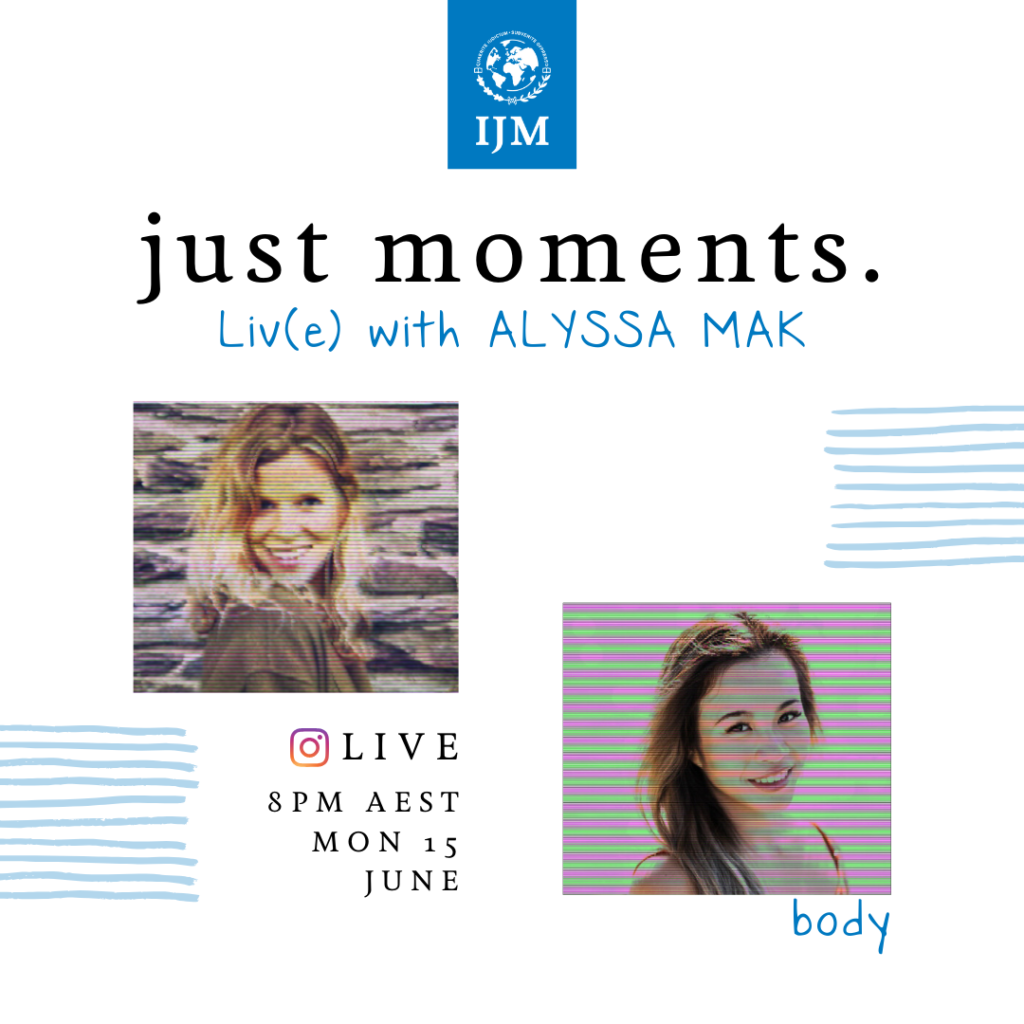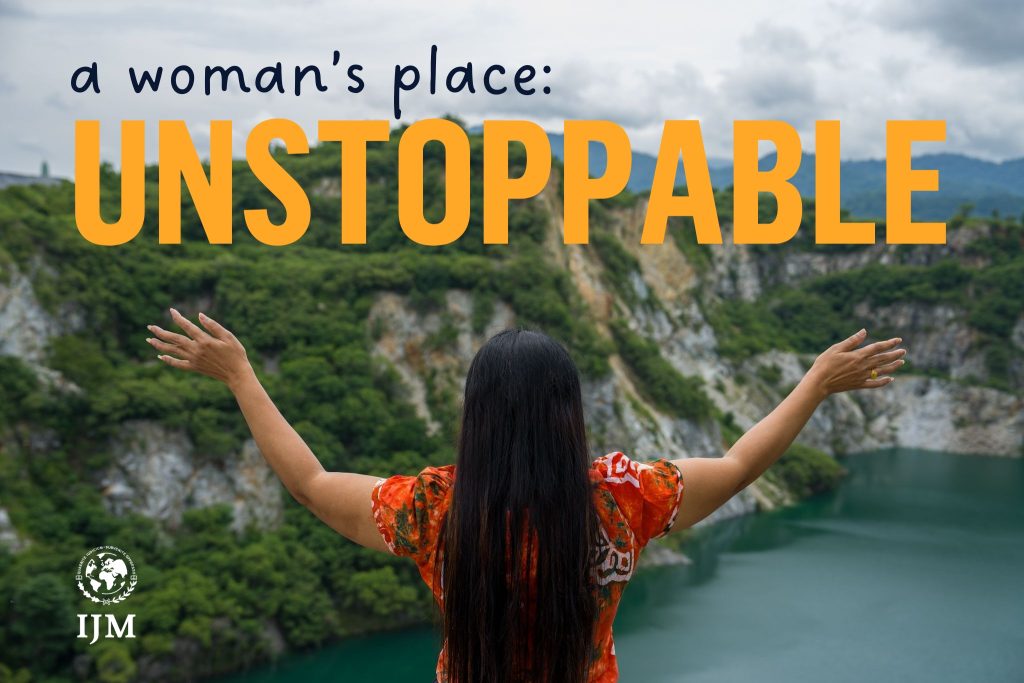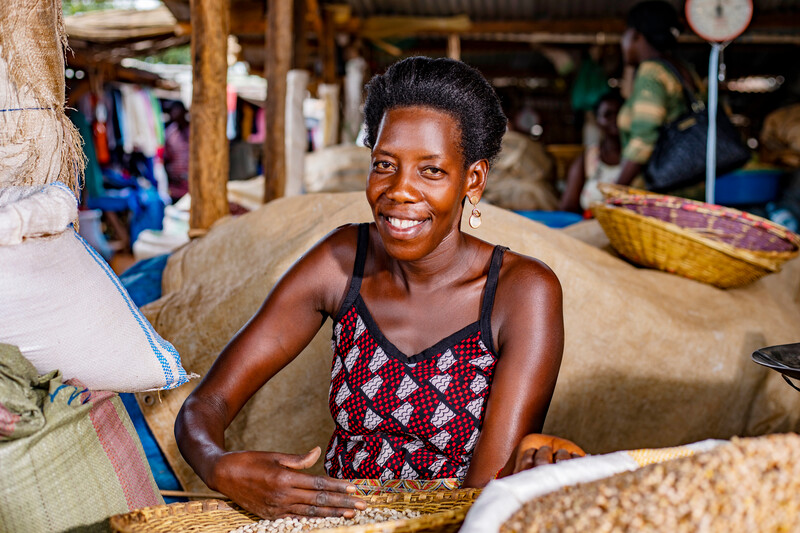

In our Just Moments series, our Events & Marketing Coordinator, Olivia Neville, spoke to IJM supporter and pilates and yoga instructor, Alyssa Mak, about the relationship between trauma and the body.
It forms part of our focus on the work of aftercare and the process of healing for survivors of cybersex trafficking of children.
Q: Who are you and what’s your connection with IJM?
I’m a yoga and pilates instructor and I’m also a trauma-sensitive yoga instructor. In fact, I’m about to complete a course specialising in trauma in sex trafficking. I first connected with IJM at a prayer gathering in Sydney.
Q: Having watched Chapters 1 and 2 of Joy’s story, what are some of your thoughts in terms of trauma and restoration?
Joy uses a lot of words to describe her emotions which are similar to words used by others who have been through abuse or who have been in toxic environments. When she was first trafficked she was confused and afraid so she didn’t want to speak up.
Joy talks about feeling trapped in her situation and this is similar for people who are in toxic situations. They feel stuck in their abuse and so they just learn to cope and survive in that environment and it becomes their new normal. Even when IJM rescued her, she wasn’t sure what was happening or why she was being rescued.
Many people who have been abused, after they’re taken out of that situation, if they don’t go through the restoration properly, they often go back into the toxic environment because that’s what they’re familiar with.
Q: We often think of trauma from abuse as being psychological and/or emotional. What can you tell us about how the body deals with trauma?
Like a lot of people, I used to think trauma was a mental thing – your memories. But the more I understood about the body, the more I realised the body has a memory bank of its own. So sometimes when you’re placed in an environment that triggers those memories, your body recognises it and the body automatically reacts the way it did when the initial trauma occurred.
For example, when you were growing up, if you had a sibling who always jumped out and tried to scare you when walked down the corridor, your body may train itself to tense up in preparation for a stressful situation. So then even years later when you walk down a corridor, your body may begin to tense up instinctively. The body recognises certain triggers.
It’s not uncommon in a yoga class for me to see people do certain poses and find release because their body has been holding so much stress. When they release those muscles, they tend to feel an emotional release also.
Q: Can you tell us more about how you address this in your work/business?
My business is called Grace x Strength and it’s a faith-based virtual yoga studio. I think a lot of people don’t really know what yoga is – they think you have to be flexible or be able to do handstands, or that it’s a spiritual practice. But basically yoga is three things: breathwork, movement and meditation.
I really love using the vehicle of yoga to approach healing. Research shows there are lots of benefits with breathwork in calming the mind and body. In terms of movement, learning how to use different poses, stretches and different movements to release tension is so important. For people who have survived sexual and physical abuse or have otherwise experienced having their body objectified, they may feel a lack of control or disconnection with their body. The movement in yoga teaches them to regain control of their body and how to have a healthy connection with their body again.
Q: What can you tell us about healing? What gives you hope for their restoration?
Healing is a long process and journey. You can’t undo what was done to you, but you can learn techniques that help you come to a place where you feel safe to manage your past.
What gives me hope is that organisations like IJM have a process that not only removes children from toxic situations, but also provide a support network – that’s so important for restoration and to help people stay out of toxic environments rather than returning to them.
When it comes to trafficking, I think IJM has the perfect recipe for helping these survivors.
Q: What are some ways that people can use their bodies to process trauma? Can you give us some practical exercises/activities?
Breathing technique
Many people, particularly those who are anxious, tend to have shallow breathing and they don’t realise it. So one tip is to learn diaphragmic (deep) breathing to stimulate the vagus nerve which controls the mind-body connection.
I teach people to inhale for 4 counts, exhale for 6 counts. Expand the belly as you inhale, draw the belly back as you exhale. When you do that for 6 or 7 breaths every morning, it really helps calm the mind and body.Simple exercise
Simple body awareness exercise
Stand on two feet and bring awareness to different parts of the body. Your heels are on the floor – what’s the temperature like? Wiggle your toes – what does that feel like?
Noticing little things like that helps you appreciate what your body can offer and improves your mind-body connection.
This post is based on Just Moments: Liv(e) with …, a series of Instagram Live conversations with experts, focusing on the role of aftercare for survivors of cybersex trafficking. Watch it here.
You can support important work like this by giving to IJM Australia’s Found to Free campaign by 30 June.




